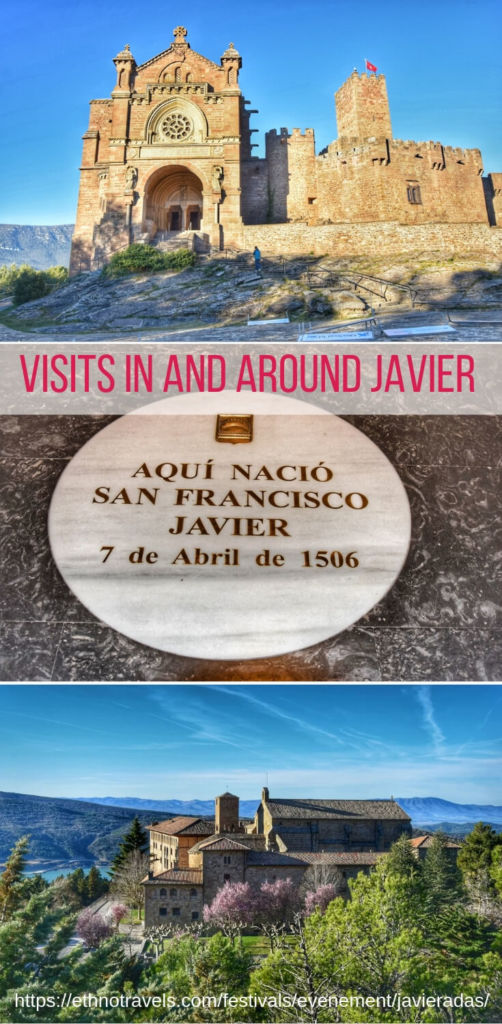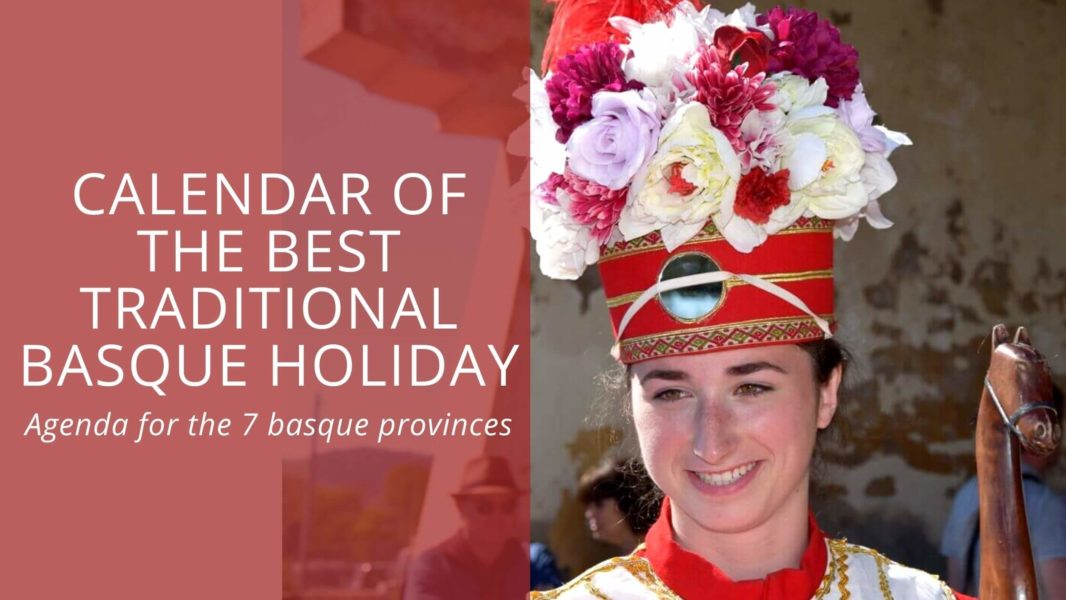The Javierada, or more precisely the Javieradas, is a pilgrimage in honour of Saint Francis Xavier that takes place every March and May in the town of Javier, Navarre.
It is also the ideal time to discover Javier, the birthplace of Saint Francis Xavier, its castle and its surroundings, especially the magnificent Leyre monastery along Yesa lake, Arbayun and Lumbier Foz, Olite, etc.
During two weekends in March and May, thousands of pilgrims gather on the roads leading to Javier’s castle to worship the saint.
The first Javierada was initiated in 1886 to commemorate the time when St Francis Xavier would have spared the village of Navarre from a cholera epidemic.
In 2019, the main Javieradas, departing from Sanguesa, took place on Sunday 7 March and Saturday 13 March.
In this article, you will find:
- The historic facts about Javierada.
- The practical information to prepare your trip.
- A selection of places to visit in and around Javier.
Are you looking for a paper guide to the Basque Country? I recommend the Blue Guide, my favorite guide thanks to its cultural and unusual information. You can order it here or below
Note: I get commissions for purchases made through links in this post at no extra charge for you.

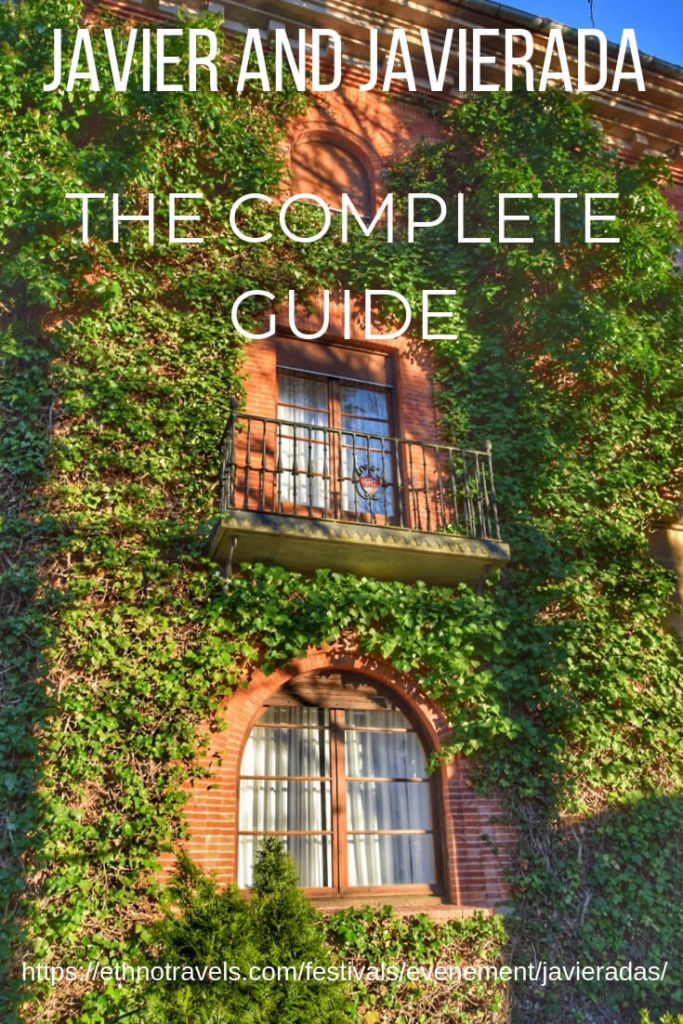
Summary.
Who was Saint Francis Xavier?
Saint Francis Xavier, Francisco Javier in Spanish and Frantzisko Xabierkoa in Basque, was born in Javier Castle in 1506, in a family of the Basque nobility of Lower Navarre, studied theology at the Sorbonne with Ignace de Loyola and Pierre Favre and in 1539 founded the Society of Jesus with them.
First a priest in Italy where he and his companions pronounced a special vow of obedience to the Pope, he was appointed apostolic nuncio in charge of spreading and maintaining the faith in all the countries of the East, including a missionary in Goa, India, where his body is preserved and shown to the public every 10 years (next time in 2024) and in China where he died.
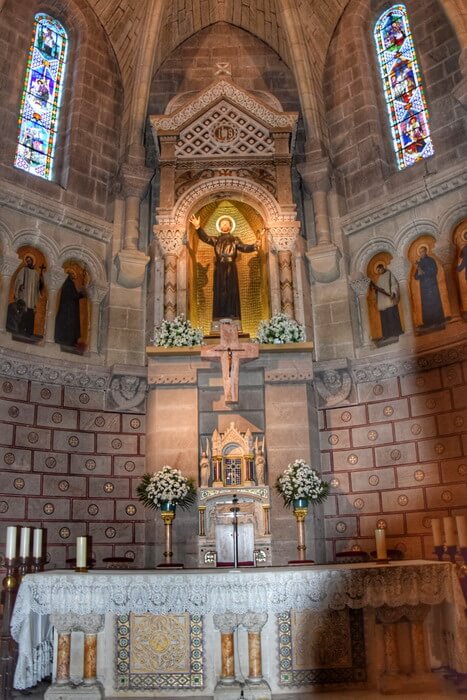
How does the Javierada take place?
During the Javierada pilgrimage, pilgrims take the different Stations of the Cross to Javier’s castle, coming from Pamplona, Estella, Ronceveaux; the most popular, the object of the main Javieradas, is the path from Sanguesa.
During the journey, some pilgrims carry crosses, others sing… sometimes songs that have nothing to do with religion!
They stop at each station of the cross to pray, rest and listen to the story related to the cross.
There are also Javieradas by theme: military Javierada, for the sick, for the schools…
During the main Javieradas, masses are held directly in front of the castle, and pilgrims take the opportunity to visit the beautiful basilica adjacent to the castle.
Where to go to get the most out of Javierada?
The most interesting Javieradas are those from Sanguesa to Javier.
For the 2nd Javierada, pilgrims are supposed to leave Sanguesa at 3pm. In reality, many pilgrims leave much earlier and reach Javier around one or two o’clock.
The main flow of pilgrims leaves at three o’clock and arrives in a fairly impressive stream…
The mass takes place around five o’clock, in front of the castle.

When to come to Javier to get the most out of Javierada?
I recommend the 2nd Javierada, which takes place in the afternoon.
The first one takes place on Sunday morning, with a departure from Sanguesa at 8am and Mass at 10am.
By coming early enough for the 2nd Javierada, i.e. on Friday, you can take the opportunity to discover Javier and the surroundings in a calm atmosphere on Friday afternoon and park without stress on Saturday morning.
How to organize your trip to Javier?
In this section, I will advise you on what to visit in and around Javier, how long to stay and where to stay.
During two weekends in March and two weekends in May.
The nearest Transfermuga station is Pamplona.
Pamplona airport is the nearest one.
What to visit in Javier?
Discover the places related to the life of Saint Francis Xavier:
- the castle (3€ during the Javierada). You can visit the interior – the stables; the basements where you will discover the life of the saint; the ground floor with various objects from the old castle and the life of the saint as well as a model of the castle; the museum with the history of the castle, Javier and Navarre, Flemish paintings; the rooms of the castle with in particular the chapel Santo Cristo including its Christ of Javier, reputed to have sweated blood during the agony of the saint in China, and the only Gothic representation in Spain of the macabre dance.
- the basilica, built on the former palace and birthplace of St. Francis Xavier.

- the parish church of the Annunciation, located opposite the castle. It was built in 1702 on the site of the abbey and former medieval church founded in the 1500s by St. Francis Xavier. There is the baptismal font in which the Saint was baptized. In the adjoining cemetery, there are discoidal stelae.
Also go down to the new village. Originally, the inhabitants lived around the castle and worked for the lords of Javier. You can see old photos of the houses of that period everywhere. In 1964, the village was established lower down.
What to visit near Javier?
Take advantage of your stay in the region to visit Sanguesa, the magnificent monastery of Leyre by Yesa lake, Sos del Rey Catolico.
Further, hike in the Foz of Lumbier and see the more accessible one in Arbayun. Visit Olite and its magnificent castle. En route, don’t miss Gallipienzo mirador then San Martin de Unx, its medieval buildings and wineries.

How long to discover Javier and the surrounding area during the Javierada?
If you come for the 2nd Javierada and even with a 3-hour drive like us from the south of the Landes, you can spend Friday discovering Sanguesa, or even small villages in the surrounding area or Sos del Rey Catolico. If you want to visit the interior of the monastery of Leyre, it is better to visit it on Friday as well. Spend the night at Javier. On Saturday morning, go early to Yesa to enjoy the magnificent outdoor setting of the Leyre monastery. Try to be back in Javier around 10-11am. You can only park on the outside car parks and there are many people.
To see the pilgrims, walk from Javier to Sanguesa and walk as much as you like. If you want to do the whole Way of the Cross, you will have to stay in Sanguesa or walk or take the bus in the morning for the 7 kilometres separating you from this city.
When the pilgrims return, the crowd is huge in Javier. It is very difficult to access toilets, water fountains, bars. We left at that time and did not attend Mass, in Spanish anyway.
On the way back, we made a slight detour to Foz of Arbayun.
If you want to hike in Foz of Lumbier, you will need more time or integrate it into the Friday day instead of Sanguesa.
With a little more time, plan to visit the beautiful castle of Olite and San Martin de Unx.
Where to stay during the Javierada?
If you come on Friday as I advise you, I recommend Hotel Xabier, a beautiful old building just opposite the castle, where the reception is very friendly, the rooms have the charm of the old times and the balconies overlook the castle.
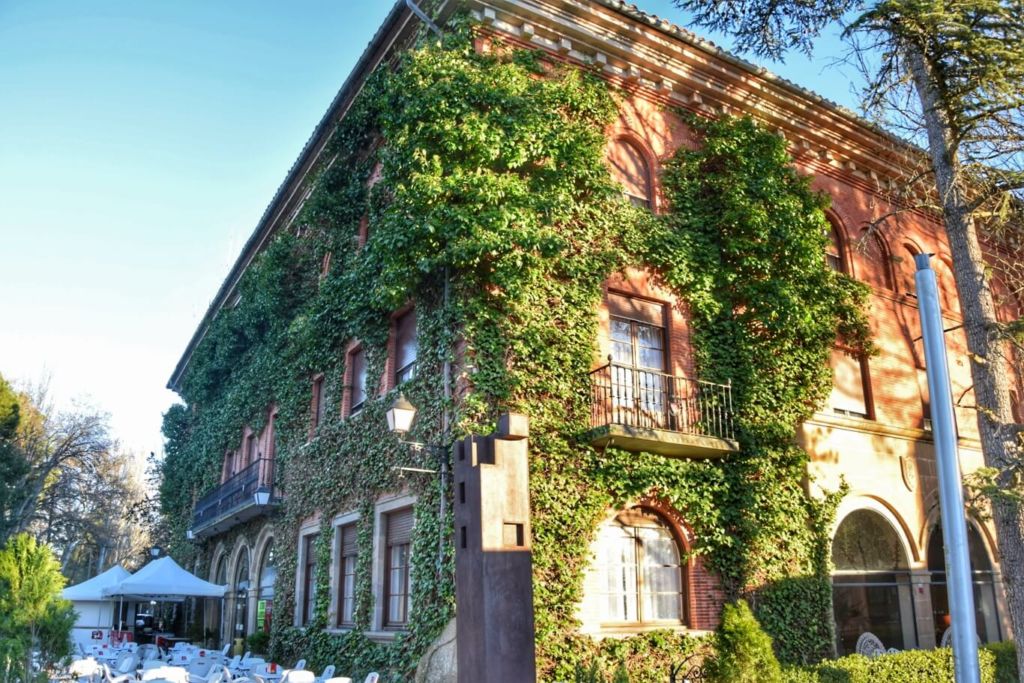
Do you need a Schengen visa?
>> Check here
Conclusion.
Whether you are a believer or not, if you want to discover Javier while immersing yourself in the history of Saint Francis Xavier, Javierada is the ideal time to spend several days discovering Navarre. You will not be disappointed.
Have you ever visited Javier or Navarre? Do you have any other tips to share? Let us know what you think!
On a related topic, don’t miss my article about the most fascinating religious festival in the Basque Country: Via Crucis Viviente in Balmaseda Biscaye
You can read my full guide to traditional Basque festivals here
Save on Pinterest for later.
